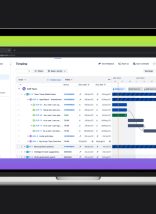In many ways, a website is like any other tool you invest in. When purchasing a new truck or building for your organization, you would understand that it would require upkeep. There is maintenance involved and repairs to take care of. Eventually, your purchase will have run its course and need to be replaced.
When it comes to websites, this is easily overlooked. Unfortunately, business owners, executives, and institutional directors often lose sight of this fact. That’s because websites don’t show their age the same way a physical asset would. Nonetheless, they do go through distinct lifecycles you can’t ignore.
This process should affect your business planning. Let’s look briefly at the three major points in a website’s life cycle…
1. Website Development and Launch
A new website should obviously have all the latest features and tools. It should be designed to be fast, clean, and outlined for a flawless user experience.
However, despite being new, it can still use monitoring and improvement. It’s crucial that you and your web development team keep a close eye on the analytics to ensure performance is as strong as expected. This will also help you see whether real-life users are able to find or take advantage of key features.
2. Website Maturity and Revision
Once a website has gone live and is stable and effective, you may think all the hard work is done. That’s rarely the case for very long.
It’s important to keep adding new content and updating pages to ensure a mature website doesn’t get stale. Additionly, web developers and executives alike need to keep a close eye on competitors, platform providers (like Google, Facebook, Magento, etc.) and even online marketing best practices to ensure the organization doesn’t fall behind. For example, Atlantic BT worked with Propper to re-design their eCommerce platform using Magento 1. While monitoring the results of the re-design, our developers realized that the growth of the site required another upgrade to Magento 2.
A website can remain in the mature, productive stage for at least several years, but only through small improvements and additions.
3. Website Upgrade and Replacement
Even a well-designed website will eventually stop being an effective tool for the organization it serves. Technology consistently evolves, leaving unattended websites dated. Changes in user habits, such as the current surge of mobile users, also hinder site performance. Lagging technical or content updates can compound over time. There could also be changes in the company.
Whatever the specific cause, or combination of causes, it is eventually smarter and more cost-effective to build a new web presence from the ground up than it is to try to salvage old apps and pages. At this point, the cycle starts all over again.

Managing the Website Life Cycle
Understanding these points in the website life cycle enables you to make the best decisions for your business. You will know when and where to invest in site maintenance. You’ll even be ready to make the cost-effective decision to upgrade or replace your site at the right time. These choices are not always easy. However, they have big implications for your future.
Where is your website at in its life cycle? What are you doing to prepare for the future?






